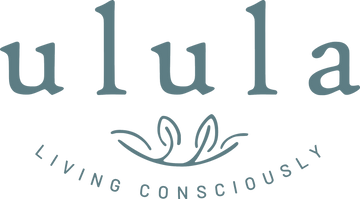For most of us, breathing is an automatic process that we hardly notice. However, the simple act of inhaling and exhaling can have a great impact on our mood and thoughts. When we're anxious, we tend to breathe in a shallow, fast way - which can lead to feeling shaky, sick and dizzy. The practice of taking deep breaths is a proven method for promoting relaxation both physically and mentally helping to reduce stress, improve mood and feel calm. It's a useful tool for individuals of all ages, including children.
Breathing exercises can help children and teens by:
- calming the body and mind
- reducing stress and anxiety
- lowering heart rate
- calming the nervous system
- triggering the release of endorphins, the feel good hormones
- creating a sense of relaxation and peace by increasing oxygen levels in the body
Explain the benefits to your child
It’s important to explain the benefits of deep breathing to your child as it helps them to understand why they should take a deep breath and how to take one that gives them the most benefit.
Practice when your child is calm
Practice deep breathing when your child is calm. By practicing when a child feels good, they will be equipped to use this tool in moments of stress or anxiety. Practicing at night before bed can also help your child fall asleep, whether they are anxious or not.
Start young
Teaching children the art of deep breathing at a young age is a valuable tool that can benefit them throughout their lives. Toddlers may struggle to understand, so start by encouraging them to take slow, calming breaths when upset or angry. As children reach primary school age, they will be better equipped to learn the basics of deep breathing.

Below are some deep breathing exercises for children and teens. Use them as a guide, and feel free to adapt to suit your child. The key is to make them feel comfortable so they are happy to use the technique when needed.
Belly Breathing
Belly breathing for kids is a simple and effective starting point. The focus is on breathing deeply through the belly (instead of a shallow chest breath). Children and teens can implement belly breathing anywhere that they need to without drawing attention to themselves, whether they are starting to feel anxious at school or with friends.
Note: Avoid prolonged breath-holding to prevent dizziness during breathing exercises.
How to do belly breathing:
- For extra relaxation have you child lie down on their back.
- Next place one hand on their belly (above the belly button) and the other on their upper chest.
- Instruct them to take a slow, deep breath in through their nose for a count of 3, feeling their lungs fill with air all the way down to their belly. As their belly expands, you will see their hand rise.
- Take a slight pause then have them slowly exhale through their mouth for a count of 4, feeling their hand lower back down. If your child's chest hand is the only one moving, gently remind them to focus on breathing deeper into their belly. Shallow chest breathing is more associated with anxious breathing.
- To make it more fun, you can place a small object like a soft toy or book on their belly and have them try to move it up and down as they breathe.
- Repeat for 3 to 4 cycles.
- Depending on your child's age or breathing ability, they may be able to do longer counts, but the important point is that the exhale is longer than inhale. This is what calms their breathing and focuses their attention.

For younger children:
Bunny breath
Pretend to be a bunny. Take 3 quick sniffs in through the nose and one long exhale out the nose. Repeat three times. Then take one final deep breath in and out. Younger children will enjoy hopping around like a bunny after breathing to continue to release stress from their bodies.
Snake breath
Sit up tall and inhale deeply. As you let your breath out, make the hiss of a snake. Make the “ssss” sound last as long as possible as you breathe out. Repeat.
Dragon breath
Hold your hand up close to your face. Take a deep breath in and slowly exhale as you feel your hot breath on your hand. Imagine you are breathing out fire like a dragon.
For older children:
Hot chocolate
Imagine you have a delicious, steaming cup of hot chocolate. Bring your cup in close. Take a long breath in. Then, slowly and gently blow the air out to cool off your hot chocolate. Repeat until your imaginary hot chocolate is cool enough to take a pretend sip.
Box Breathing
Box Breathing, also known as square breathing, is another simple yet effective breathing technique that can help reduce stress, and anxiety, and improve focus.
This technique involves inhaling deeply for a count of 4, holding your breath for a count of 4, exhaling for a count of 4, and then holding your breath for a count of 4 before repeating the process.
How to do box breathing:
- Sit comfortably with your back straight and your feet flat on the ground.
- Close your eyes and take a deep breath in through your nose for a count of 4.
- Hold your breath for a count of 4.
- Exhale slowly through your mouth for a count of 4.
- Hold your breath for a count of 4.
- Repeat the process for 5-10 minutes.

